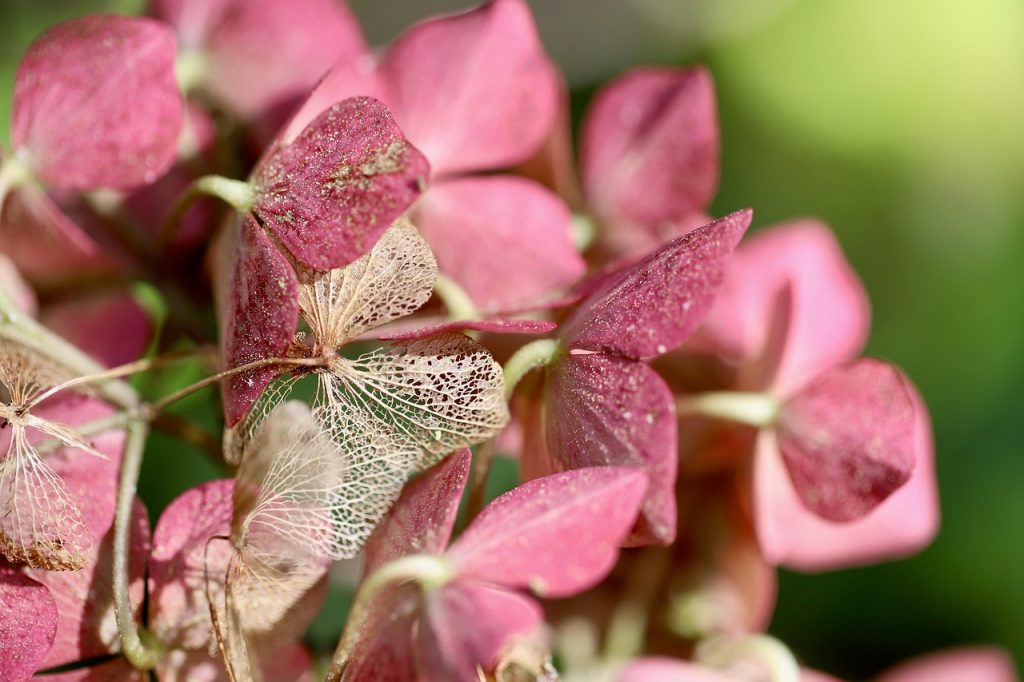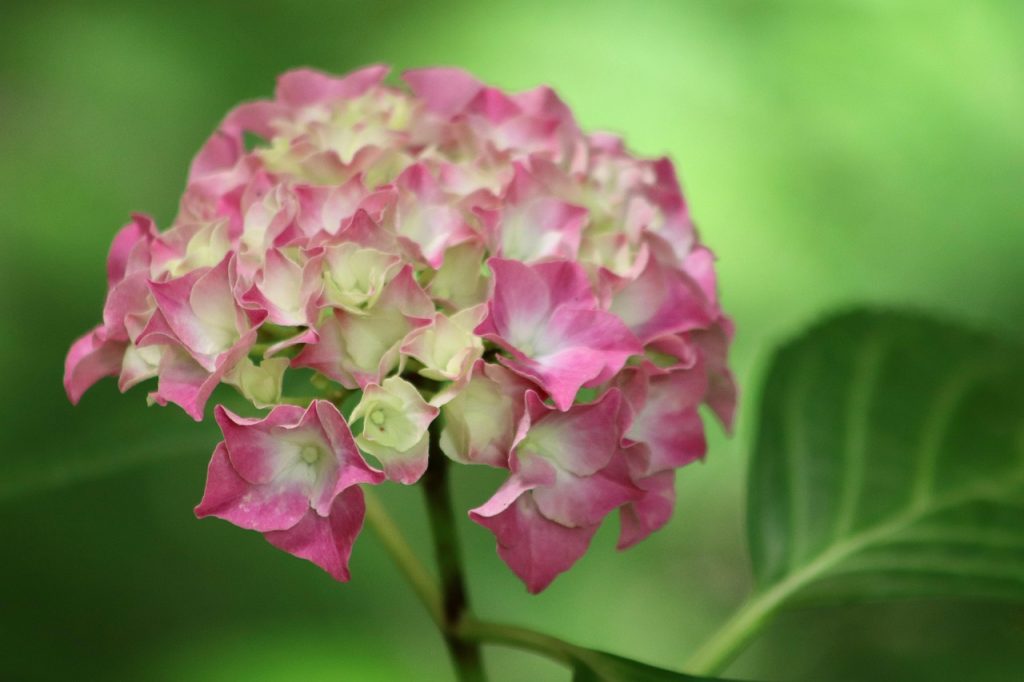Hydrangeas, with their lush blooms and vibrant colors, are a favorite for gardeners looking to add a touch of elegance to their landscapes. Originating from Asia and the Americas, these flowers have become staples in gardens worldwide. This article will delve into the fascinating world of hydrangeas, covering their history, varieties, and comprehensive seasonal care tips to ensure your hydrangeas flourish year-round.
Introduction to Hydrangeas
Hydrangeas belong to the family Hydrangeaceae and are recognized for their large, showy flower heads, which range from subtle whites to vibrant blues and pinks. The plant’s name is derived from the Greek words ‘hydor’ meaning water and ‘angos’ meaning jar or vessel, referring to the shape of its seed capsules.

History and Origin
Hydrangeas have a rich history dating back to their discovery in Asia and North America. They were first cultivated in Japan, where they were admired for their ornamental beauty. European explorers brought them back in the 18th century, where they gained popularity across Europe and eventually in North America.
Appearance and Varieties
Hydrangeas are deciduous shrubs that can grow between 3 to 10 feet tall, depending on the variety. Their flowers are typically arranged in large, spherical clusters. Popular varieties include:
- Hydrangea macrophylla (Bigleaf Hydrangea): Known for its large, mophead or lacecap blooms.
- Hydrangea arborescens (Smooth Hydrangea): Features white, ball-shaped flowers.
- Hydrangea paniculata (Panicle Hydrangea): Offers cone-shaped blooms, often white or pink.
- Hydrangea quercifolia (Oakleaf Hydrangea): Notable for its oak-shaped leaves and white flowers.
Growing Conditions for Hydrangeas
Light Requirements
Hydrangeas thrive best in partial shade. While they can tolerate morning sun, the afternoon shade is beneficial, especially in hotter climates. Too much sun can cause wilting, while too little can hinder blooming.
Soil Preferences
These plants prefer well-drained, fertile soil. The pH level of the soil can affect the color of the blooms, especially for Bigleaf Hydrangeas. Acidic soils (pH below 6) yield blue flowers, while alkaline soils (pH above 7) produce pink blooms.
Watering and Temperature
Hydrangeas need consistent moisture, especially during dry spells. It’s essential to water deeply but infrequently to encourage deep root growth. Ideal temperatures for hydrangeas range between 60°F to 70°F. They can withstand colder climates, but protection is necessary in extreme conditions.
Planting and Propagation
How to Plant Hydrangeas
To plant hydrangeas, select a site with morning sun and afternoon shade. Dig a hole twice as wide and as deep as the root ball. Place the plant in the hole, ensuring the top of the root ball is level with the ground. Fill the hole with soil, water thoroughly, and apply mulch to retain moisture.
Propagation Techniques
Hydrangeas can be propagated through cuttings or layering. For cuttings, take a 5-6 inch shoot in late spring, remove the lower leaves, and plant in a pot with a mix of sand and peat. Keep the soil moist and roots should develop in a few weeks. For layering, bend a low branch to the ground, cover it with soil, and secure it in place until roots form.

Seasonal Care for Hydrangeas
Spring Care
In spring, assess any winter damage and prune dead wood. Apply a balanced fertilizer to encourage growth. Ensure consistent watering as the plant begins to leaf out.
Summer Care
During summer, maintain regular watering, especially during dry periods. Deadhead spent blooms to encourage more flowers and prevent seeding.
Fall Preparation
In the fall, reduce watering and stop fertilizer application to prepare the plant for dormancy. Mulch around the base to protect roots from winter cold.
Winter Protection
For winter, protect hydrangeas with a thick layer of mulch or straw. In colder climates, consider wrapping the plant with burlap or using a plant cover.
Common Problems and Solutions
Pests and Diseases
Hydrangeas may be affected by pests like aphids and spider mites. Use insecticidal soap or neem oil to manage these pests. Diseases such as powdery mildew and leaf spots can be treated with fungicides and by ensuring good air circulation around the plant.
Environmental Challenges
Hydrangeas can suffer from wilting due to heat stress or inadequate watering. Ensure proper watering and mulching to retain soil moisture. If blooms are not forming, consider soil amendments to adjust pH or improve fertility.
Practical Uses of Hydrangeas
Beyond their beauty, hydrangeas can be used in floral arrangements, both fresh and dried. Their blooms make excellent cut flowers and can be used to create stunning bouquets or centerpieces. Additionally, hydrangeas can be used to create natural dyes.
FAQ About Hydrangeas
How can I change the color of my hydrangea flowers?
To change hydrangea flower colors, adjust the soil pH. For blue flowers, add aluminum sulfate or ammonium sulfate to the soil. For pink flowers, add lime or dolomite.
When is the best time to prune hydrangeas?
Prune hydrangeas in late winter or early spring before new growth begins. However, avoid pruning Bigleaf Hydrangeas too late, as they bloom on old wood.
Why are my hydrangea leaves turning yellow?
Yellowing leaves can indicate nutrient deficiencies, overwatering, or poor drainage. Ensure the soil has adequate nutrients and improve drainage if necessary.
Can hydrangeas grow in pots?
Yes, hydrangeas can be grown in containers. Choose a large pot with good drainage and use a well-draining potting mix. Regular watering and fertilization are crucial for potted hydrangeas.
By understanding the needs and care of hydrangeas, gardeners can enjoy these beautiful blooms year after year. With the right conditions and seasonal care, hydrangeas can be a stunning addition to any garden.